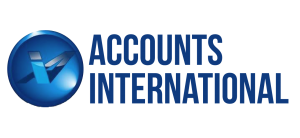Insights (Blog)
Employee Fraud. It does not depend on the size, type, location or industry of the organization, as every organization is prone to this problem. We would like to believe that our employees are honest and trustworthy but still there are many reasons and ways in which your employees may become the part of fraud. A Report presented to the Nation on Occupational Fraud and Abuse (Copyright 2014 by the Association of Certified Fraud Examiners, Inc.) suggested that 5% of the annual revenue losses of the typical organization each year due to employee fraud. Therefore, prevention and detection is important to reduce the loss. Thus, every organization should develop a plan to prevent fraud is prior rather than after being affected from the loss.
There are many forms of fraud but the main three categories are:
- Asset Misappropriation – This is least costly and made up 90% of all fraud cases. In this type of fraud, an employee either steals, exploits or misuse organization’s resources. Examples of asset misappropriation include fake reimbursement, stealing of non-cash possessions of the organization or cash before or after recording.
- Corruption – Corruption made up less than one-third of the total fraud cases and fell in the middle. Corruption happens when employees use the status or influence provided by the organization for their own benefit and violates the duty to the employer. Examples of Corruption include cases lie bribery, extortion, and conflict of interest.
- Financial statement fraud – This fraud type comprises of less than 5% of cases, but can cause median loss to the organization. In these kinds of frauds, employees intentionally misstate or omit the information in the financial reports of the company. This fraud may include fake revenues, hidden charges or liabilities or inflated assets.
Prevention
The presence of preventative measures, whether the organization is large or small, is vital. ACFE 2014 revealed that the fraudulent activities, which were studied to make the report, lasted an average of 18 months before they got detected. This shows that the loss is greater as the employee of your company are committing fraud for a year and a half. Therefore, there is a need to minimize the fraud occurrences by implementing adequate procedures and controls to prevent fraud.
- Know Your Employees – The first step to preventing the fraud is knowing the employees. Fraud perpetrators display the behavioral traits which indicate the intention of committing fraud. Potential fraud risks can be thus minimized by observing the actions and listening to employees issues. Management should build a trustworthy relationship with the employees and have time to know them. An attitude change can give you the clues and can suggest inter-organization issues that should be resolved immediately to prevent loss. For example, an employee may commit fraud to take revenge from the angry or dissatisfied boss. Or a hard working employee who has been serving your company more than a decade and is now, having personal and financial issues, could be an indication of potential fraud risk. It is important to know about your employees and have a good conversation with them.
- Make Employees Aware of fraud and its consequences – Employees of the organization should be aware of different types of fraud and its consequences to the organization as awareness is key to avoid big loss. And gives signal to the ones planning or thinking about to commit fraud. Also, the loyal and trustworthy employees who are the assets in preventing the fraud would have a enough knowledge about signs of frauds. According to the ACFE 2014 report, if there is a tip associated with report of fraud then they are easily detected (over 40%). The reporting system should be anonymous, and employees should be able to report fraudulent activity by keeping their identity safe.
- Implementation of Internal Controls – To safeguard the firm’s assets and to ensure the integrity of its accounting records, implementation of internal controls is a must. Internal Controls include Segregation of duties to help reveal any discrepancies in the system. The other internal controls include documentation to help reduce fraud. The Internal controls should be monitored and regularly updated to ensure their effectiveness. An expert is needed to analyze the company’s policies and procedures to recommend the appropriate programs and implementations.
- Monitor Vacation Balances – If an employee has not missed a day of work in years, it could also be a sign that this particular employee has something to hide. It is also advisable to rotate the jobs of employees within the company. This may also reveal if there is any fraudulent activity going on as the second employee will review the operations of the first one.
- Hire Experts – Developing of anti-fraud policies can be helpful and these can be developed by hiring of professionals like CFEs (Certified Fraud Examiners) and CPAs (Certified Public Accountants). These experts provide services like internal audit and forensic analysis to extensive and primary consultations.
- Live the Corporate Culture – A constructive, positive and encouraging work environment can play a major role in preventing the employee theft and fraud. There should be clear policies and procedures along with a clear organizational structure. An open-door policy should be included to give employees the opportunity of communication and discussion with the top management and to prevent the fraud.
- Detection – With prevention strategies, the organization also needs detection methods to detect the frauds, and these procedures should be visible to the employees. The visibility of the preventive internal controls acts as one of the influential deterrents to fraudulent behavior. The fraud detection strategies need to monitor and get updated to ensure their effectiveness continuously. The plans take external information and then linked with internal data, the results are then used to enhance the prevention controls. The fraud detection strategies need to be documented along with the teams responsible for each task. Employees should be made aware of the implementation of the screening plan; this makes them mindful of the fact that company is watching and will take disciplinary action if the employees are found to be committing fraud.
Conclusion
Every organization is vulnerable to fraud and the employees who are intended to do fraud would not think about the size of the company. These frauds can cause massive financial losses, legal charges and affect reputation of the company.
Having a proper plan and strategy can reduce the losses. Therefore, to implement the preventive measures and to make the employees aware of the company policy can significantly reduce the activities from occurring as the cost of prevention is less as compared to potential fraud to be committed.
Most communities have at least one bookkeeper who serves the local businesses. They make occasional visits to each client to update the books, prepare payroll, pay bills, and take care of whatever other tasks they’re expected to handle.
If you own a business or are preparing to open one, you might think the community bookkeeper is your only option. Not long ago that assumption would have been true but not so much anymore. In the modern internet age, it’s easier than ever to communicate and collaborate with people far away through the web. That means you can work with the best bookkeeper for you, no matter where they happen to be located.
Your local bookkeeper might do a perfectly fine job but you don’t have to settle. Advancements in technology have led to advancements in outsourced bookkeeping. Modern bookkeepers who use the latest software and other tools to serve their clients can bring major benefits to your business. Here are a few examples how:
Bookkeeping in real-time
Making an occasional visit to a client’s office is no longer a practical way for a bookkeeper to work.
Modern bookkeepers instead manage their client’s finances in real-time, using cloud accounting and bookkeeping software. They can access your general ledger from their own office and keep your books accurate and up-to-date at all times. You’ll always have insight into cashflow, helping you make smart business decisions. And your bookkeeper can identify and resolve any issues before they get worse.
A bookkeeper who understands your industry
One of the biggest downsides of traditional, local bookkeepers is they’re not always experts in the operations of the businesses they work with. They tend to take on all comers, which prevents them from developing an industry-specific specialization.
As technology has advanced, many modern bookkeepers that are able to serve clients remotely have carved out a niche for themselves. You should take advantage of this development and find a bookkeeper that is an expert in your industry. They’ll understand how your business operates, make suggestions on the best technology to implement, and let you know how you’re performing relative to similar businesses.
Better service at a lower cost
Modern bookkeepers who use cloud technology are often able to provide a wide range of services, with quick turnaround times. And they’re often able to do so at a lower cost than traditional bookkeepers.
This is because different cloud-based systems are able to connect and share data, reducing the amount of data entry that is required. For example, your point of sale system can automatically import daily sales transactions into your accounting software. Similarly, your invoicing software can update your accounting software when a customer pays an invoice. And your payroll software can automatically update your employee records for tax purposes.
The reduction in data entry means modern bookkeepers can focus on services that are more beneficial to you, like frequent bank reconciliation and financial reporting. They’re often able to charge less than bookkeepers who don’t use this technology because hours aren’t spent on tedious data entry.
Find the best partner for you
At the end of the day, the best bookkeeper for you is someone who you trust and like working with. Your local community bookkeeper might have those traits but if they don’t, you’re search doesn’t need to be constrained by geography.
The Balance Sheet is the core financial statement of any business. It’s a “snapshot” in time of your company’s health; it provides information at a specific date such as December 31, 2015. However, the Balance Sheet does not state how you used your company’s assets or how the business arrived at its current position. Instead, additional financial statements use the information on the Balance Sheet to analyze the information presented. For example, the Income Statement uses the information provided on the Balance Sheet to determine how a company used assets to generate income.
The Balance Sheet consists of the following basic categories:
- Assets.This category lists cash, accounts and notes receivable, inventories, short-term investments and marketable securities, prepaid expenses, and other current assets. This category also lists land, buildings, machinery, and equipment.
- Liabilities.Liabilities are your company’s debts. This category lists accounts payable, notes payable, income taxes currently payable, current portion of long-term debt, and other current liabilities. Additional items listed in this section of the balance sheet include long-term debt, capital lease obligations, deferred income taxes, and other long-term liabilities.
- Owner’s Equity.Also known as net worth, owner’s equity is the difference between your assets and your liabilities, and gives you the value of your business at a particular point in time.2
While the Balance Sheet does not show how you generated income, the Balance Sheet can help you analyze trends in your company. For example, are the receivable and payable cycles becoming longer or shorter? Are you heading toward a cash shortage? The balance sheet can also tell you if your company is in a position to expand. Banks, vendors, and investors will also look at your company’s balance sheet to determine credit and loan worthiness.
However, you can only create your balance sheet after you make the necessary adjusting journal entries, post the journal entries to the general ledger, determine period totals, and create a trial balance sheet. The Balance Sheet requires information from different sources from your accounting records and it is the source for the majority of information about your company’s current stability, worth, and profitability. In addition, it is the source for all additional financial statements about your business.





